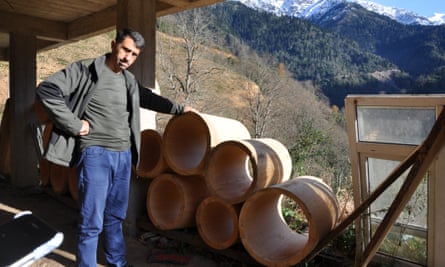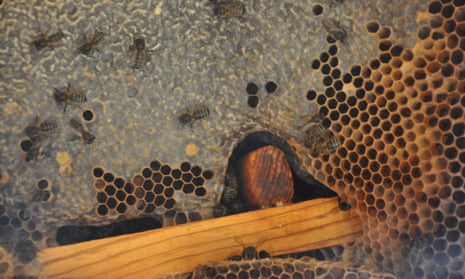It is no surprise that a substance powerful enough to take out 1,000 battle-hardened mercenaries of the Roman republic has fascinated humanity for millennia. Stories cataloguing the delights and the dangers of deli bal, or Turkish “mad honey”, crop up throughout history.
Pompey the Great was admired and feared throughout the ancient world, but an early misadventure with mad honey near the modern-day Black Sea city of Trabzon almost derailed his entire career.
The Roman general was pursuing the army of Mithridates VI in 97BC when in a stroke of military genius the Greco-Persian king ordered his troops to place bowls of the locally produced honey in the path of the advancing Romans. Three detachments of soldiers fell upon it, becoming delirious or fainting as they succumbed to its psychedelic effects. Mithridates’ troops returned to find Pompey’s men incapacitated and proceeded to slaughter the lot of them.
Mad honey is still produced in small quantities by beekeepers in the Kaçkar mountains above the Black Sea, the only place in the world other than the foothills of the Himalayas where indigenous species of rhododendrons produce a potent neurotoxin called grayanotoxin. If bees feed on enough rhododendron nectar, the mud-red honey they produce has a sharp scent, bitter taste – and for human consumers, a potential high.

A small spoonful on its own or with hot water or boiled milk is enough to induce a mildly hallucinogenic or euphoric state. It is normally taken before breakfast as a traditional treatment for hypertension, impotence and a number of other conditions.
Eighteenth-century Europeans called it miel fou, importing it from the Ottomans to add to ale for an extra buzz. More recent versions of mad honey have popped up in western popular culture in Matt Groening’s Futurama and the 2009 film Sherlock Holmes.
Too much, however, can reduce blood pressure to potentially dangerous levels and induce nausea, fainting, seizures, arrhythmia and in rare cases, death. Dozens of people a year are admitted to hospital in Turkey for mad honey poisoning.
Dr Abdullah Paksoy, 27, who moved to the Black Sea village of Fındıklı three months ago, said he had never heard of mad honey or its toxic effects before he was briefed by new colleagues on the symptoms and treatment – usually a saline infusion or a shot of adrenaline and careful monitoring until the patient’s heart rate and blood pressure returns to normal. “It’s very popular stuff here. I was surprised,” he said. “I haven’t tried it yet myself.”

Even harvesting mad honey can be dangerous. Hasan Kutluata, 48, grew up on the humid mountainous slopes around the Black Sea, where conditions are perfect for cultivating the tea the area is famous for as well as the rhododendrons needed to produce mad honey.
His father taught him how to make traditional lindenwood beehives and secure them on the branches of trees, which is hazardous enough work in itself. Kutluata has shimmied up and down more trees than he could possibly count in 30 years and is proud to say he has never fallen. He has, however, been attacked by a bear.
“I survived by shoving my arm down its throat, cutting off its oxygen, while shouting for help,” he said, showing the red scars that still mark his hands and left leg.
Kutluata’s mad honey harvest is worth defending. Only a small fraction of honey produced in the area is pure and potent enough to justify the name and a kilogram of the best stuff can sell for up to 2,000 lira (£260). Many shops in the region now sell jars of mad honey to a growing number of foreign tourists, but the quality is not guaranteed.

Turkey’s Black Sea region was also for a long time a major centre for the production of hemp, which Kutluata says the bees enjoyed and which added depth and complexity to the local honey.
Farming the plant was banned for decades under anti-narcotics legislation, but is set to make a comeback as the government searches for ways to boost Turkey’s beleaguered economy.
Kutluata is looking forward to experimenting. On a bright December day at his new workshop, a bone-shaking 20-minute drive on mountain tracks above the village of Yaylacılar, he and his wife, Emine, are checking on the sleepy winter bees, debating whether to move some of the hives to a north-facing side of the mountain.
“Beekeeping up here is very hard work,” he said. “But there is a lot of satisfaction in getting it right. There is always something new to learn.
“For example, my new workshop has a drawbridge to the top floor rather than stairs, to keep the bears out.
“People in the village call me Hasan the strangler now,” he said. “But I’ll be damned if I’m ever fighting a bear again.”
